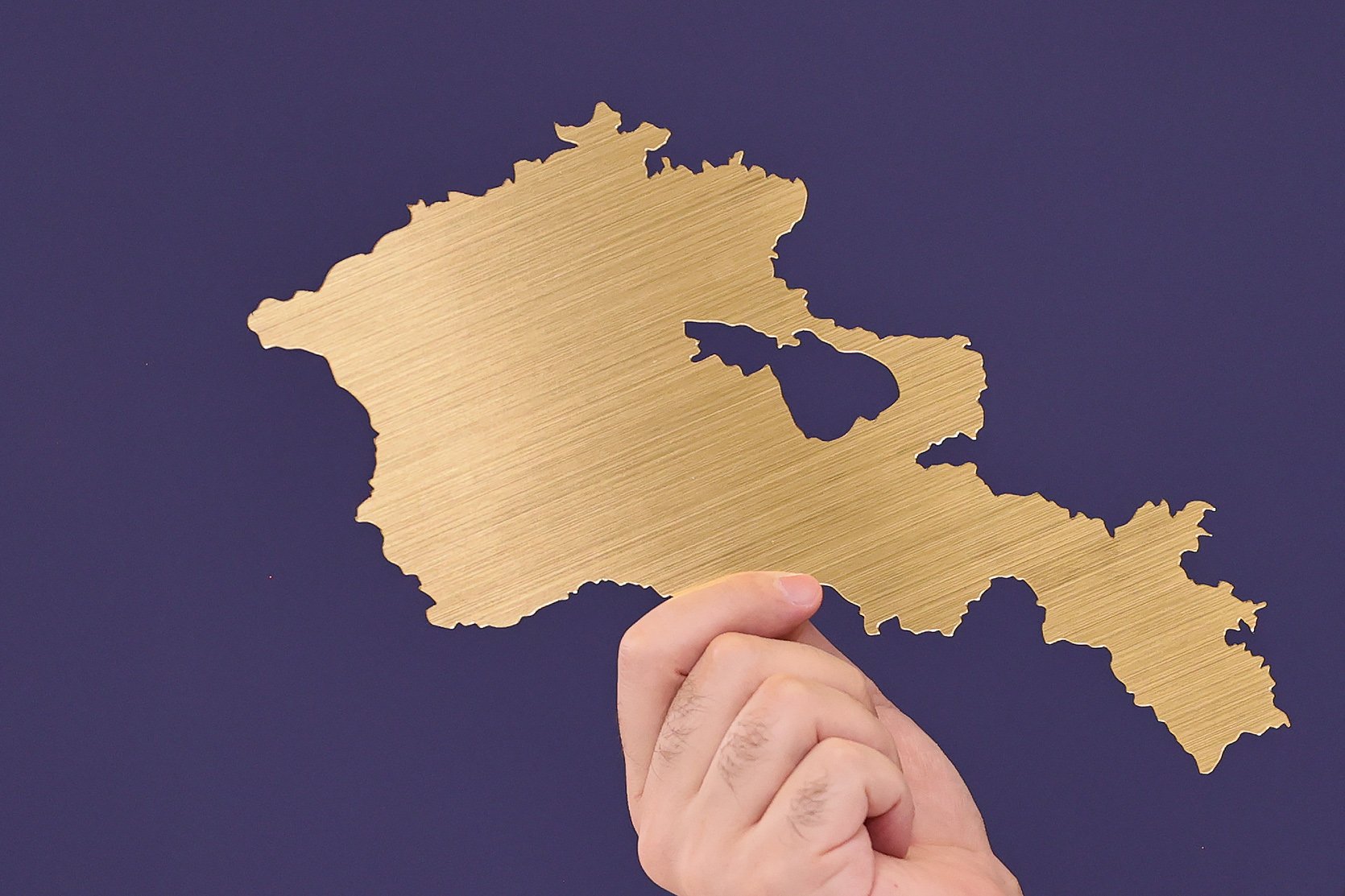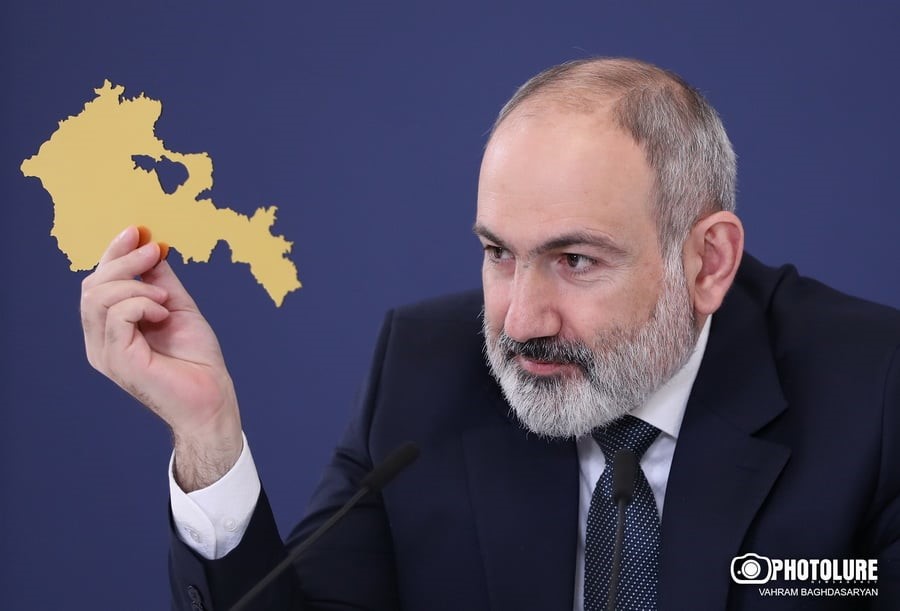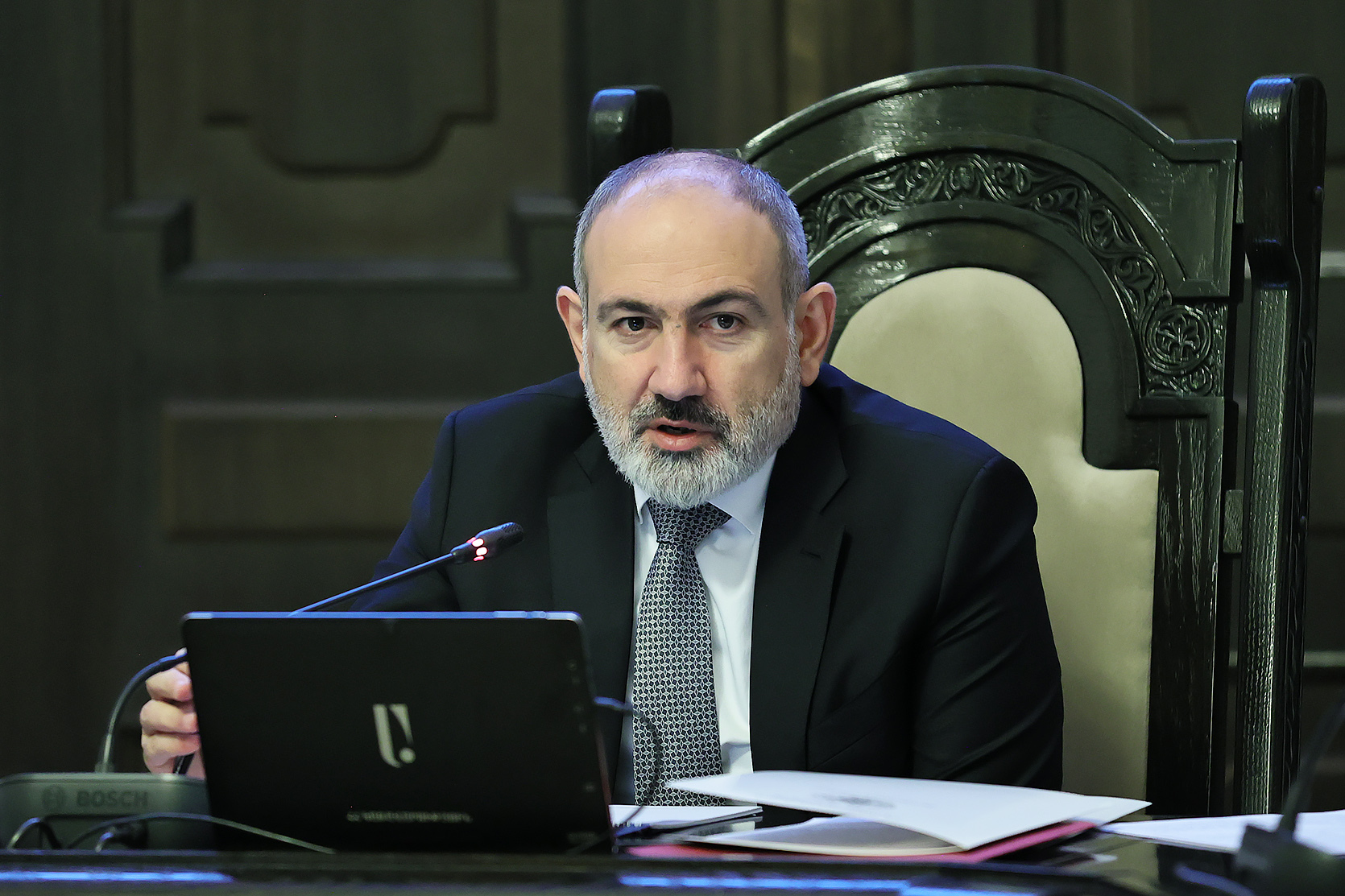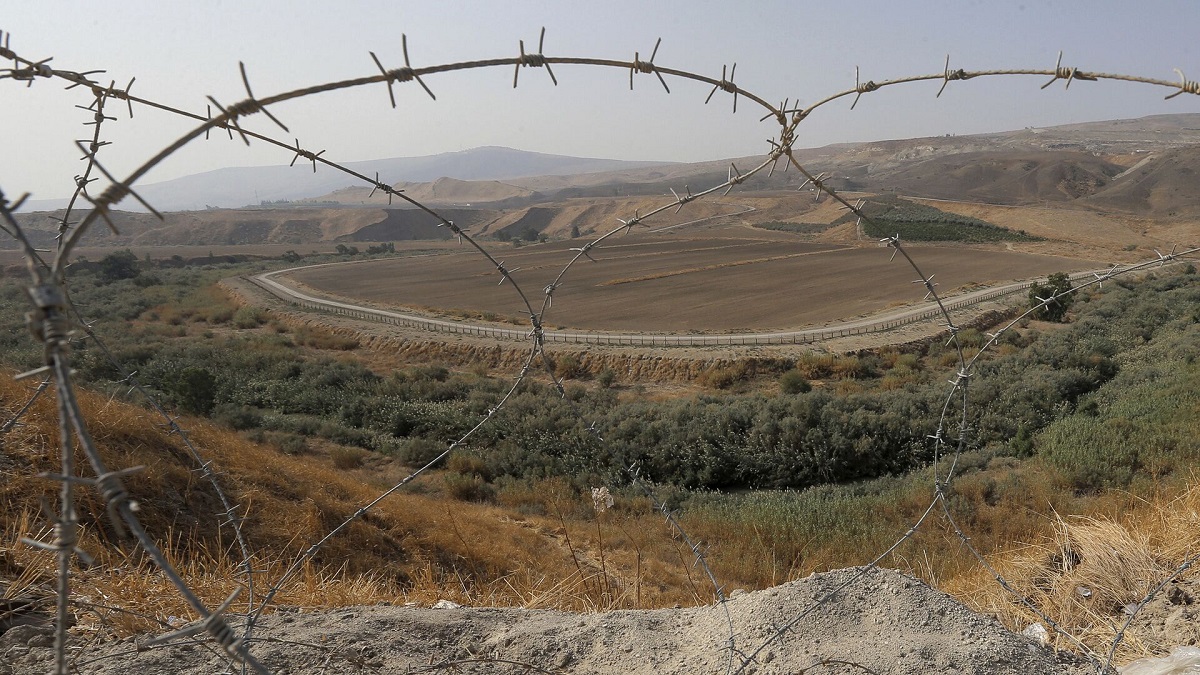
Armenian perspective on delimitation
Armenia and Azerbaijan have preliminarily agreed on how the delimitation of certain sections of the border will proceed, including the exact location of Armenia’s northern border. Specifically, this concerns 4 non-enclave villages adjacent to Armenia’s Tavush province.
On April 19, Yerevan and Baku agreed to bring these border sections ‘in line with the legally justified inter-republican border that existed within the framework of the USSR at the time of its dissolution.’ Azerbaijan agreed to base the delimitation process on the 1991 Alma-Ata Declaration. Armenia had insisted on this but had not received a positive response from Azerbaijan.
However, immediately after the announcement of the decision, residents of the Armenian border villages protested by blocking the road connecting Armenia to Georgia. They are demanding assurances for their security from the authorities. Government officials reassure them that the agreement will significantly reduce risks.
Political analyst Ruben Mehrabyan explains that the agreement reached ‘prescribes: “The Alma-Ata Declaration of 1991 is now universal for every meter of the 1000-kilometer border between Armenia and Azerbaijan.”‘ In his opinion, now, if Baku attempts to violate the agreements on any stretch of the border, it will face ‘conflict and serious problems not with Yerevan, but with the international community.’
The agreements reached by Yerevan and Baku have already been welcomed by U.S. secretary of state Antony Blinken, president of the European Council Charles Michel, EU special representative for the South Caucasus Toivo Klaar, UN secretary-general António Guterres, and representatives of individual countries. ‘This positive development achieved through direct negotiations is an important step towards signing a peace agreement [between Armenia and Azerbaijan],’ the Turkish foreign ministry said.
- ‘Moscow knows the fire will be lit not in Yerevan, but in Baku’ – Armenian analysts
- “Is the West offering Armenia an insufficient proposal instead of genuine support?” Opinion
- “Armenia does not create dividing lines in the region” – Pashinyan
What did Yerevan and Baku agree on?
On April 19th, the eighth meeting of the commissions on the delimitation of the state border took place, although it was not announced in advance. The Ministry of Foreign Affairs of Armenia immediately reported on the results of the meeting:
- “At the initial stage of the delimitation process, the parties preliminarily agreed on the passage of separate sections of the border line directly between the populated areas of Baghanis (Republic of Armenia) — Baghanis Ayrum (Republic of Azerbaijan), Voskepar (RA) — Ashagy Askipara (AR), Kirants (RA) — Heyrimli (AR), and Berkaber (RA) — Kizil Hajili (AR), with the aim of bringing them into line with the legally justified inter-republican border that existed within the framework of the Soviet Union at the time of its dissolution.
- It was decided that the description of these sections of the border line would be drawn up taking into account the clarification of coordinates based on geodetic measurements on the ground, which will be formalized by the corresponding protocol-description, which must be agreed and signed by the parties by May 15, 2024.”
It is also reported that the commissions will appeal to their governments to ensure the simultaneous and parallel placement of their border services at the agreed sections of the border.
The official text was clarified by the prime minister’s Office as follows:
- The commissions reproduced on the map the borders of the USSR period between the listed above villages,
- at the next stage, these borders must be clarified and reflected on the ground, which will be an unprecedented event: for the first time, there will be a clarified state border between the countries in this area,
- the cartographic basis of the process is the latest, that is, the latest topographic maps of the Soviet Union era, which have a legal basis.
‘For the first time, we resolved the issue at the negotiating table’
Touching on the agreement reached between Armenia and Azerbaijan regarding the border demarcation process, the prime minister of Armenia stated that it should not be underestimated.
Commenting on the agreements reached between Armenia and Azerbaijan, the prime minister of Armenia stated that they should not be underestimated.
“It is very important to note that, in fact, Armenia and Azerbaijan have resolved the issue at the negotiating table for the first time. Of course, this is an achievement for Azerbaijan, and a significant achievement for Armenia,” said Nikol Pashinyan.
According to him, by their signatures, Yerevan and Baku confirmed:
- recognition of each other’s territorial integrity,
- that the delimitation process will not create a new border, but will reproduce the border that existed de jure at the time of the Soviet Union’s dissolution.
Pashinyan said that during the Soviet era, the villages of Voskepar and Ashagy Askipara were intertwined, and the villages of Kirants and Heyrimli were very close. He believes that all issues that may arise during the delimitation process can be resolved:
“If suddenly, during the delimitation process, it turns out that there is a problem with some houses and land plots, we will defend the rights of all our citizens. If necessary, we will build new houses in the same settlement.“
The prime minister assured that the agreements reached will significantly reduce security risks both in the Baghanis-Voskepar-Kirants area and along the entire border:
“We have adopted a fundamental principle for the entire process of further border delimitation. This means that we can resolve all disputed issues at the negotiating table, in accordance with the agreements reached.”
He emphasized that border delimitation commissions are also discussing border security issues. He announced that the governments of the two countries intend to ensure the safe lives of people on both sides of the border.
The residents of bordering villages have blocked the road to Georgia
After learning about the decision of the commissions, residents of border settlements in the Tavush region blocked the interstate highway to Georgia at the section near the village of Kirants. The governor of Tavush, Hayk Galumyan, and the minister of Internal Affairs, Vage Kazaryan, asked the villagers to unblock the road, but they refused.
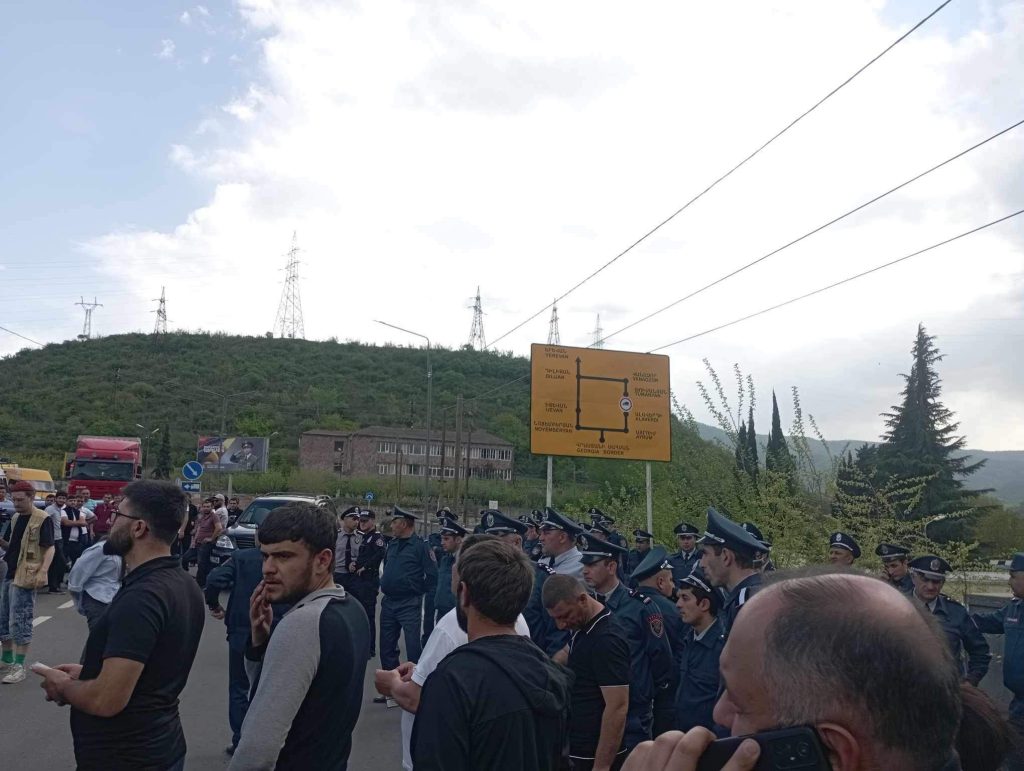 Protest rally in the Tavush region.
Protest rally in the Tavush region.
They reopened the road on the evening of April 20 and closed it again the next day. Everyone who needs to travel from Armenia to Georgia now takes the alternative route, not the main one.
The residents of Tavush who blocked the road consider the agreement reached as a ‘unilateral concession’ to Azerbaijan.
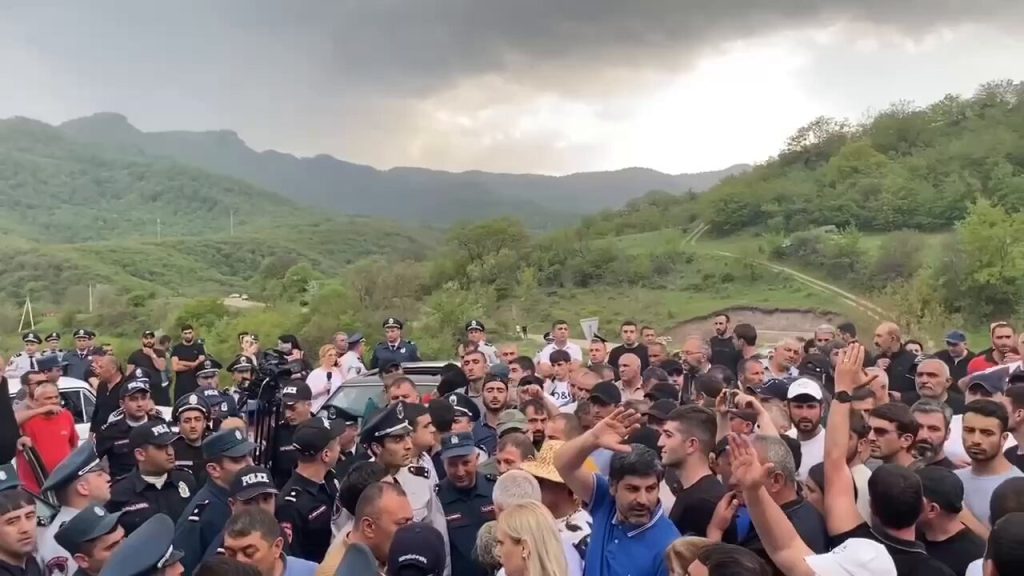 The participants of the protest action blocked the road to Georgia.
The participants of the protest action blocked the road to Georgia.
They are convinced that the delimitation of territories under the conditions accepted by the authorities creates risks for the security of border settlements and their residents. Opposition politicians share the same opinion.
The participants of the protest spent the night on the road. They told journalists that they are awaiting the arrival of deputy prime minister Mger Grigoryan, who heads the Armenian commission on delimitation. They stated that if the explanations provided by the deputy prime minister do not satisfy them, the protest action will continue.
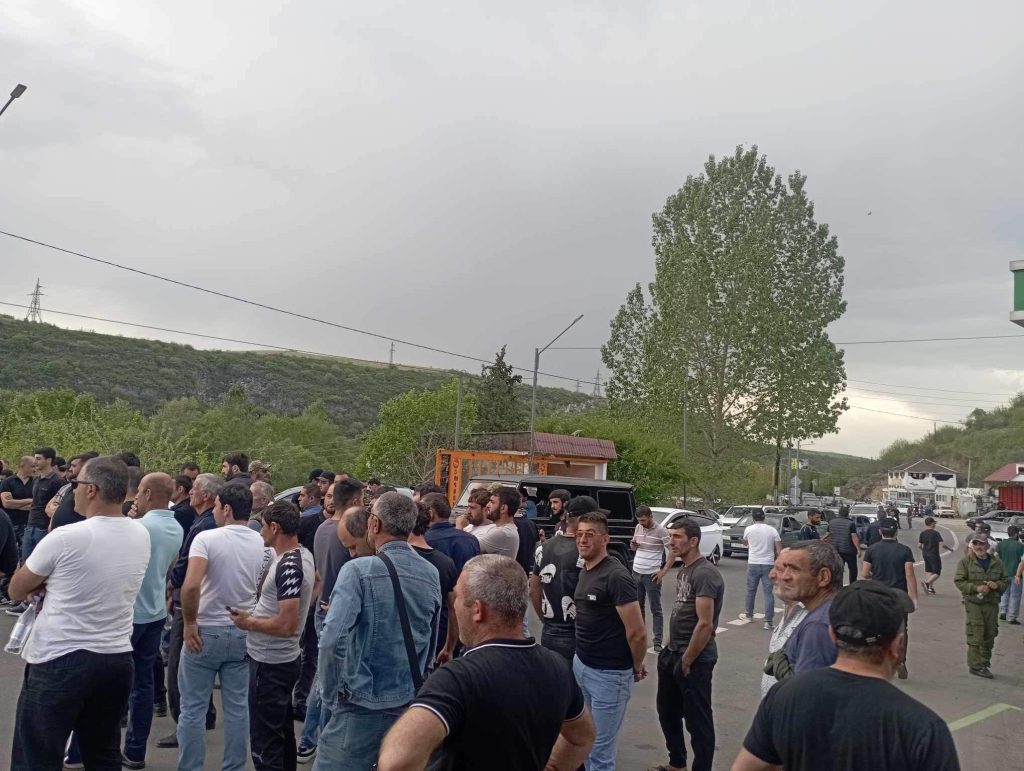 The protest action in Tavush continues
The protest action in Tavush continues
However, it was reported from the office of the Vice Prime Minister that Mger Grigoryan will not travel to Tavush. Instead, he will meet with the heads of administrations of several localities in the region in Yerevan, at the government building.
Russian border guards will leave the Tavush region
‘Russian military posts appeared here due to certain circumstances. What is happening now is certainly a significant change in the situation. And this change should have results in all directions,’ said the Prime Minister of Armenia to journalists.
Thus, Nikol Pashinyan indirectly confirmed that after the demarcation and delimitation of the border, Russian border guards will leave the Tavush region.
‘This will mean that we no longer have a front line, we have a border. And a border is a symbol of peace. The border guards of Armenia and Azerbaijan, interacting with each other, will be able to independently protect the border.‘
According to Pashinyan, the heads of the border services of the two countries are in contact with each other and are negotiating how to organize the protection of the border in this area:
‘I ask you not to succumb to provocations. We are not going to lay out our defense plans on tables and show them in front of cameras. But the expectation and perception are such that we are moving towards peace. This is very important for the peace process“.
Commentary
Political analyst Ruben Mehrabyan emphasizes that on the day when the joint statement of the delimitation commissions was coordinated, the “big seven” addressed Yerevan and Baku:
“Particular emphasis was placed on the Alma-Ata Declaration and the borders of 1991, based on which further agreements between Armenia and Azerbaijan should be concluded. A few hours later, Baku accepted these provisions.”
He believes that the agreement on border delimitation is also the result and consequence of a phone conversation between Blinken and Aliyev, which took place before the Armenia-EU-US meeting in Brussels on April 5. Mehrabyan asserts that Washington “called Aliyev to order using extremely harsh wordings.”
And this played a role in the fact that after that, Baku announced the recognition of the Alma-Ata Declaration and confirmed “commitment to both the declaration and the statement signed following the four-party meeting in Prague.” There, Armenia and Azerbaijan agreed on mutual recognition of territorial integrity.
He emphasizes: now Azerbaijan has practically acknowledged that there is a border between the two countries, which must be reproduced on the map and on the ground.
Ruben Mehrabyan is confident that the Alma-Ata Declaration of 1991 will play its role on all sections of the border between Armenia and Azerbaijan.
The Alma-Ata Declaration is a document on the creation of the CIS. And it says that the borders between the new states will be based on the administrative borders between the republics of the USSR.
“It was important to accept the principle. And now, according to this principle, what is not ours will be given away, and what is ours will be taken,” he believes.
At the same time, the political analyst notes that “Baku’s enthusiasm will diminish” when it comes time to return territories belonging de jure to Armenia:
“We have no illusions about how Azerbaijan may behave. We know that the principle of ‘give them something to silence them’ does not work with Baku. They will remain silent for 2-3 days, after which they will put forward new demands and want something else.”
He immediately warns that in the event of new demands, Baku will encounter an obstacle – the principle under which they signed:
“And in that case, they will have a conflict not with us, which they already have, but with the international community.“
He emphasizes that pressure on Azerbaijan is increasing. It is evident in international judicial instances and the response of Western partners. Baku has acquired a “reputation as a violator of rules,” which also complicates the country’s position in international relations.
The analyst also commented on Moscow’s position on this issue. According to him, Russia is trying to play on the fact that delimitation and demarcation have not been conducted:
“The Armenian-Azerbaijani border is movable, how is poor CSTO [a military bloc operating under Russia’s leadership] supposed to know where its responsibility zone is. Nothing of the sort. This is just Lavrov’s desire. Only this kind of perception can keep Russia on this border.”
Mehrabyan is convinced that Armenia should take the following important steps:
- “urgently remove the Russian presence on the Armenian-Azerbaijani border,
- withdraw its signature from the trilateral statement of November 9, 2020 [on the cessation of hostilities in Karabakh].”
He believes that the Russian military has nothing to do on the Armenian border, and the statement has long since “died.” It should be “put in the museum of history so that future generations can see and know what kind of rabble we have dealt with for the past 30 years.”

